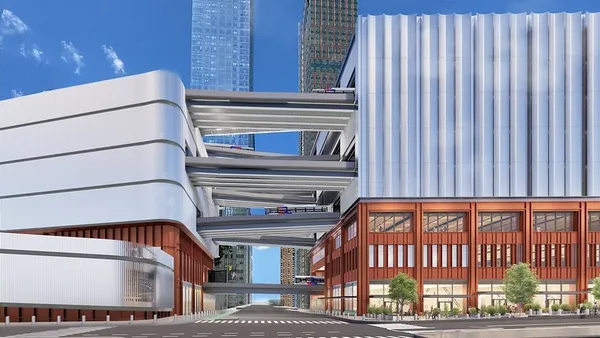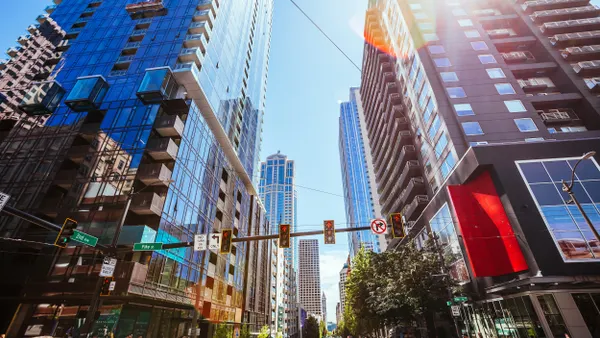Dive Brief:
-
Washington, DC, has earned the U.S. Green Building Council's (USGBC's) first LEED for Cities Platinum certification, according to WAMU.
-
To qualify for the designation, the District had to set sustainability objectives and then submit data to the nonprofit USGBC showing how it met those goals. The USGBC determined that the city performed high across several environmental standards, including greenhouse gas emissions and clean energy innovation.
-
The District has more LEED-certified projects than any other state on a per-capita basis, with a number of its public schools having earned the certification. The District introduced its Sustainable DC Plan in 2011, which aims to make it a sustainability leader among U.S. cities and states.
Dive Insight:
The District is also among the country's leaders in green-roof installations, which encompass a variety of vegetation that building owners install to replace or supplement traditional roofing systems. Green roofs help insulate buildings, provide a peaceful refuge for employees during the work day and manage stormwater runoff by absorbing rain. Washington, DC, also offers a rebate of between $10 per square foot and $15 per square foot for those who install green roofs.
Washington, DC, is also first among cities in the U.S. for Energy Star–certified buildings. In 2016, the District had 174 million square feet of certified space across 790 buildings, which saved owners an estimated $167 million, according to the Environmental Protection Agency. The District is followed by Los Angeles (531 buildings) and New York (395 buildings).
Last year, a report from commercial real estate firm Bentall Kennedy found that LEED-certified projects in the U.S. typically charge 3.7% more in rent and see 4% higher occupancy rates than those that aren't certified. Energy Star–certified buildings enjoyed 2.7% higher rents and a 9.5% increase in occupancy. The resulting increases in rents and occupancy could raise property values by 8% to 10%, the report found.
Last October, a World Green Building Council report indicated that in addition to improving employee health and job satisfaction, green features could pay off financially for employers by increasing worker productivity. In the report, the council also developed a step-by-step guide for companies looking to achieve the same benefits.










